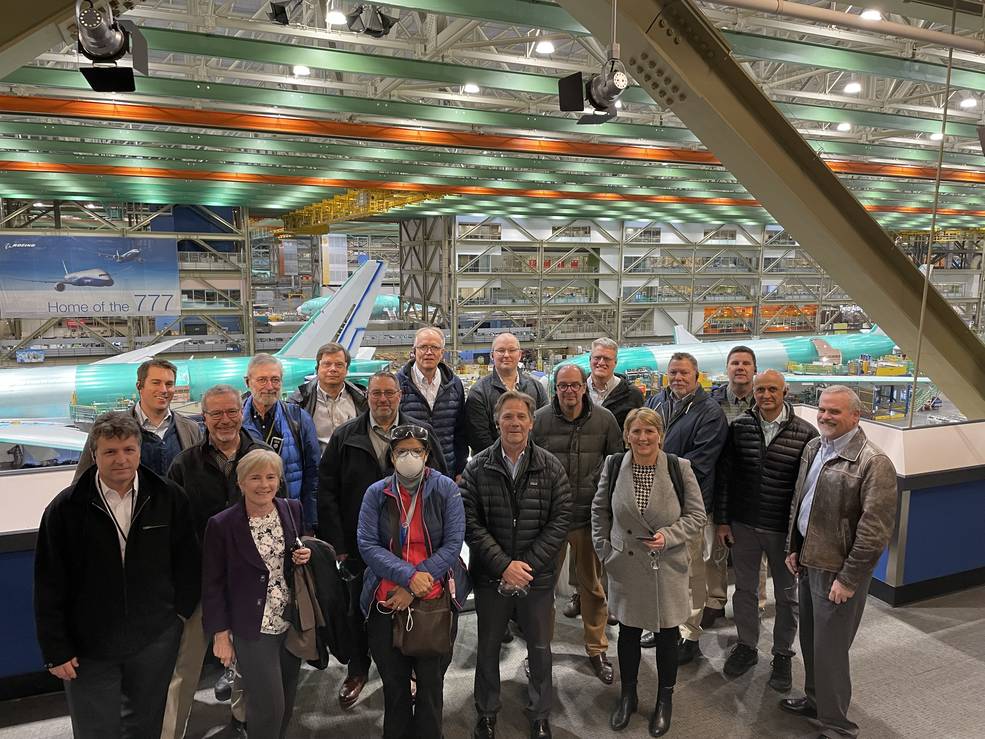NASA Awardees to Develop Sustainable Aviation Composite Tech

NASA has issued $50 million in awards to 14 organizations to develop manufacturing processes and advanced composite materials for aircraft structures. These green technologies hold the potential to help reduce aviation carbon emissions.
The awards are from NASA’s Hi-Rate Composite Aircraft Manufacturing (HiCAM) project, which seeks to reduce the cost and increase the production rate of composite structures made in the U.S. With more lightweight, composite airframes in service, airlines will save fuel and reduce emissions, making commercial aviation more sustainable. Sustainability, cost, and aircraft production rate drive U.S. competitiveness in the commercial aircraft industry.
“HiCAM will bring the value of composite technology to the high-volume single-aisle fleet and accelerate aviation towards meeting its goal of net-zero carbon emissions,” said Dr. Richard Wahls, mission integration manager for the Sustainable Flight National Partnership at NASA Headquarters in Washington.
For its contribution to the Sustainable Flight National Partnership, HiCAM works with a public-private partnership, the Advanced Composites Consortium, which allows partners to take advantage of each other’s expertise and increase the likelihood of the U.S. aviation industry adopting results. Organizations within the consortium that received funding through these latest awards will match NASA’s funding.
“By working together as a team, rather than as competitors, NASA and our partners will accelerate the development of technologies and the transition of those technologies onto the next generation of transport aircraft,” said Dr. Richard Young, HiCAM project manager at NASA’s Langley Research Center in Hampton, Virginia.
When NASA launched HiCAM, the project considered multiple materials and manufacturing techniques. HiCAM established three manufacturing concepts: next-generation thermosets, resin-infused composites, and thermoplastic composites. The new awards will support the evaluation and development of these concepts at small scales, including experiments in material processing, assembly techniques, inspection, and structural performance.
The Advanced Composites Consortium member organizations that received NASA funding through these latest awards are:
- Advanced Thermoplastic Composites of Post Falls, Idaho
- Boeing of St. Louis
- CGTech of Irvine, California
- Collier Aerospace of Newport News, Virginia
- Collins Aerospace of Chula Vista, California
- Electroimpact of Mukilteo, Washington
- Hexcel, of Stamford, Connecticut
- Lockheed Martin of Palmdale, California
- Northrop Grumman of Clearfield, Utah
- Solvay of Alpharetta, Georgia
- Spirit AeroSystems of Wichita, Kansas
- Toray Advanced Composites of Morgan Hill, California
- University of South Carolina of Columbia, South Carolina
- Wichita State University National Institute for Aviation Research
The additional members of the consortium are:
- NASA Langley
- Aurora Flight Sciences of Manassas, Virginia
- Convergent Manufacturing Technologies US of Seattle
- The Federal Aviation Administration William J. Hughes Technical Center at the Atlantic City International Airport in New Jersey
- GE Aviation of Evandale, Ohio, Mississippi State University
At the conclusion of this phase of the project, HiCAM will select the most promising concepts for further development, after which will follow a full-scale demonstration of fuselage or wing components by 2028.
In total, NASA plans to invest $184 million in HiCAM while partner organizations are expected to contribute $136 million, resulting in a total operating budget of $320 million.
HiCAM’s support for public-private partnerships in high-rate composite aircraft manufacturing is a key contributor to the Sustainable Flight National Partnership’s ability to accelerate U.S. progress toward an environmentally and economically sustainable aviation future.
Learn more about NASA aeronautics at:





